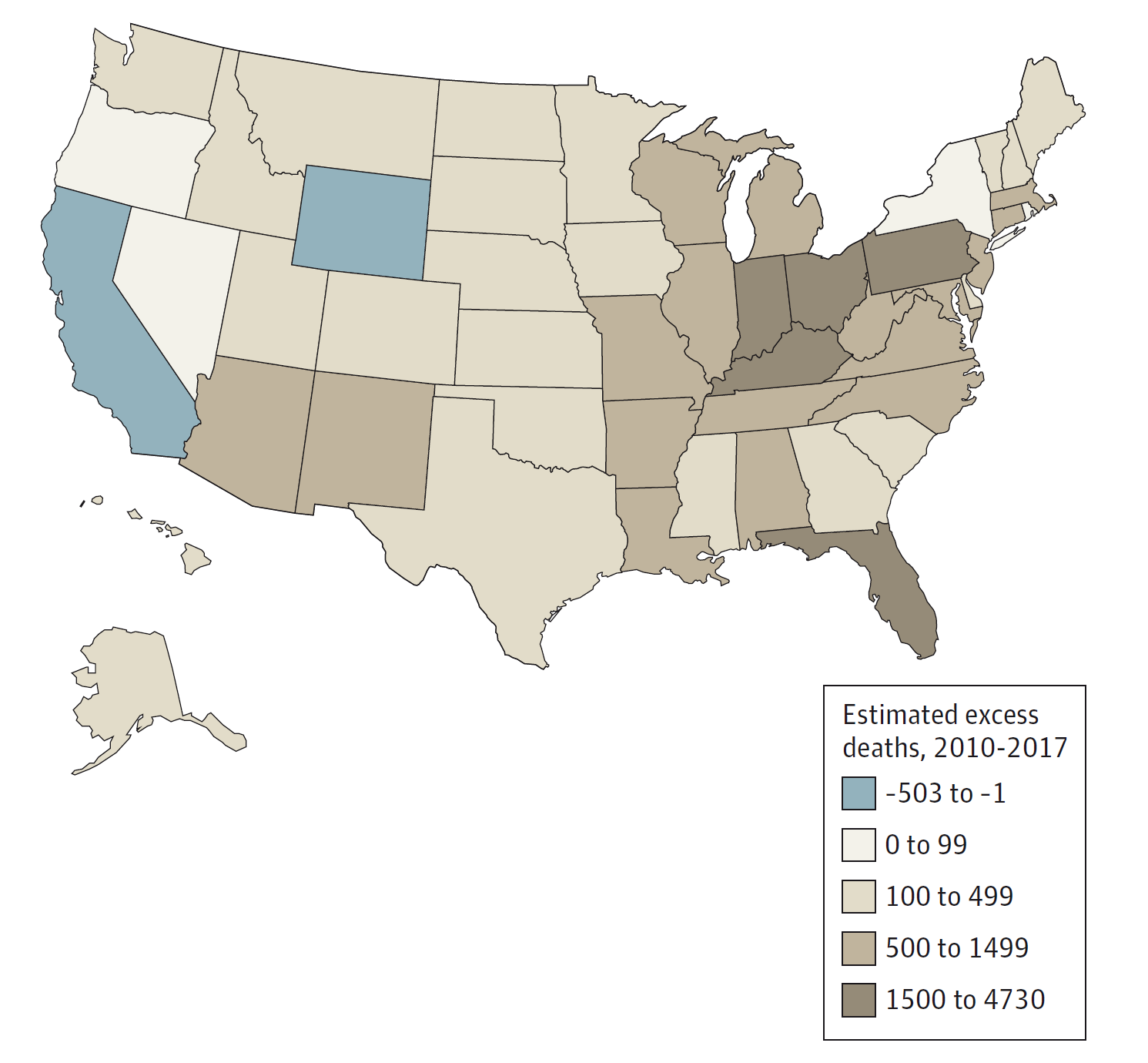For the First Time in Modern History, US Life Expectancy is Falling
/The omnibus report in JAMA finds mid-life deaths are driving the decrease, but the cause remains murky.
For the first time in modern United States history, life expectancy is decreasing.
The history of the industrialized world since 1950 has been one of continually increasing life expectancy, as technology and medicine advanced in the modern era. A decrease in life expectancy is a particular example of American exceptionalism and is brought into stark relief by this study, examining 70 years of data, appearing in the Journal of American Medical Association.
From 1959 to 1979 US life expectancy increased, keeping pace with other industrialized nations. After 1980 though, that increase had slowed, and the US began to fall behind.
Life expectancy over time in the US
US life expectancy peaked in 2014 at 78.9 years, and since then, it has started to fall.
Now, in contrast to some earlier reports, the decrease in life expectancy was seen across races, sexes, and age groups, though it was driven by an increase in mid-life deaths. There seems to be some broad forces at play here, and the paper – which is really worth a deep read, tries to tease some of these apart.
Increase in overdose deaths by age group
So, first of all, yes, drug overdoses have skyrocketed. From 1999 to 2017, the rate of drug overdoses in midlife increased by 385%. Overdose deaths increased by more than 500% among those aged 25 – 34 and by a staggering 909% among those aged 55-64.
Excess deaths at the state level highlight the Ohio Valley, New England.
Suicides and alcoholic liver disease, the other components of so called “deaths of despair” increased as well. But this is not the full explanation for our declining life expectancy. Deaths of despair only explain 15% of the disparity in life expectancy in the US vs. other countries.
For clues as to what else is causing life expectancy to fall, we need to look deeper into the data. You can see here the states most profoundly affected by falling life expectancy; New England, and the Ohio Valley are driving these results.
What was happening in those states when life expectancy was stalling, and then falling? An economic downturn, the erosion of the middle class, and rising income inequality. In fact, much of the disparity between life expectancy in the US and other economies was driven by those at the lower end of the income spectrum.
Its hard to discuss discrepancies in mortality between the US and Europe without addressing the differences in our social support systems and the provision of healthcare. Our lack of a universal healthcare system, another bit of American exceptionalism, may explain some of the difference here as more individuals fall through the cracks.
But that’s not the only explanation – after all, deficiencies in health care delivery wouldn’t explain why our death rates from cardiovascular disease and cancer have fallen while deaths due to other diseases have risen.Increasing levels of psychological distress and rising obesity rates may play a role too. In other words, there probably isn’t one solution here.
Does any single factor link all these potential explanations? The authors don’t speculate. But I wonder if this isn’t a consequence of the American psyche – that fiercely independent mindset – that value on personal responsibility that has made the country so productive, but also leaves some individuals economically vulnerable and vulnerable to isolation and despair. Balancing the unique American character with our obligations to each other may just be the prime challenge of the next 70 years.




